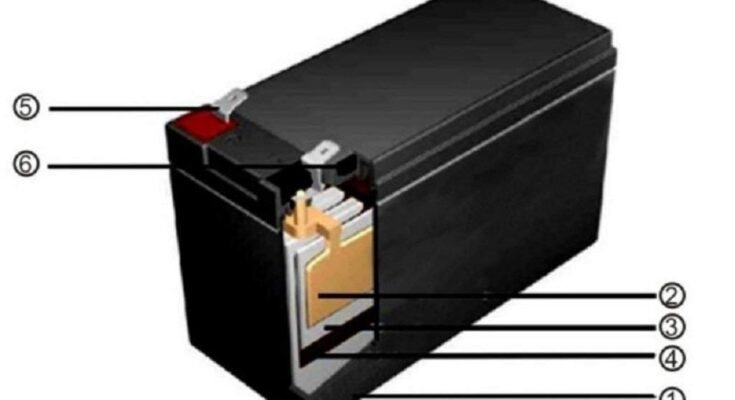Lead Acid Replacement Battery market was valued at USD 8.45 billion in 2022 and expected to grow at a CAGR of 8.6% during the forecast period.
Lead acid batteries have been the dominant type of rechargeable battery for many years due to their low cost, reliable performance, and ability to deliver high currents. However, they have several drawbacks, including limited energy density, low cycle life, and maintenance requirements. As a result, there has been a push towards developing lead acid replacement batteries that offer improved performance and longer lifetimes.
Get a Free Sample Copy of a Research Report: https://wemarketresearch.com/sample-request/lead-acid-replacement-battery-market/331
Some examples of lead acid replacement batteries include:
Lithium-ion batteries: Lithium-ion batteries offer higher energy density, longer cycle life, and lower maintenance requirements than lead acid batteries. They are also more expensive.
Nickel-cadmium batteries: Nickel-cadmium batteries have been used as a lead acid replacement for many years, particularly in industrial applications. They offer high cycle life and good performance at low temperatures, but are less common today due to their toxicity and relatively low energy density.
Nickel-metal hydride batteries: Nickel-metal hydride batteries offer a good balance of performance and cost, making them a popular choice for many applications. They have higher energy density than nickel-cadmium batteries, but lower energy density than lithium-ion batteries.
Sodium-ion batteries: Sodium-ion batteries are a relatively new technology that offer high energy density and low cost, making them an attractive lead acid replacement option. However, they are still in the early stages of development and commercialization.
Overall, the choice of lead acid replacement battery will depend on the specific application, taking into account factors such as energy density, cycle life, cost, and environmental impact.
Covid-19 Impact:
The COVID-19 pandemic has had a significant impact on the global economy, including the lead acid replacement battery industry. Here are some of the ways that COVID-19 has affected the industry:
Supply chain disruptions: The pandemic has caused disruptions in global supply chains, making it more difficult to obtain raw materials and components needed for lead acid replacement battery production. This has led to delays and shortages, as well as increased costs for manufacturers.
Reduced demand: The pandemic has also led to reduced demand for lead acid replacement batteries, as many industries have slowed down or shut down completely due to social distancing and other restrictions. This has had a significant impact on the automotive industry, which is a major consumer of lead acid replacement batteries.
Shift towards renewable energy: The pandemic has accelerated the shift towards renewable energy sources such as solar and wind power, which has increased demand for batteries to store energy. While lead acid replacement batteries are still used for this purpose, newer technologies such as lithium-ion batteries are becoming more popular due to their higher energy density and longer lifetimes.
Increased focus on sustainability: The pandemic has also increased awareness of the need for sustainability and reduced environmental impact. This has led to increased interest in battery recycling and reuse, as well as development of new battery chemistries that are less toxic and more environmentally friendly.
Overall, the COVID-19 pandemic has had both short-term and long-term impacts on the lead acid replacement battery industry, and the full extent of these impacts is still being felt and evaluated.
Market Dynamics:
Drivers:
Energy density: Lead acid batteries have relatively low energy density, meaning they can store less energy per unit of weight or volume than other battery chemistries. This limits their usefulness in applications where space and weight are at a premium, such as electric vehicles and portable electronics. The development of higher energy density battery chemistries, such as lithium-ion, has led to increased interest in lead acid replacement batteries.
Longer cycle life: Lead acid batteries have a limited number of charge-discharge cycles before they start to degrade and lose capacity. This limits their useful lifetime and increases the cost of ownership. Newer battery chemistries, such as lithium-ion and nickel-metal hydride, offer longer cycle life and can be recharged more times before they need to be replaced.
Lower maintenance requirements: Lead acid batteries require regular maintenance to ensure they operate safely and efficiently, including topping up with distilled water, checking electrolyte levels, and monitoring charge status. Newer battery chemistries, such as lithium-ion, require little to no maintenance, making them more attractive for applications where maintenance is difficult or costly.
Environmental concerns: Lead is a toxic substance that can cause environmental damage and pose health risks if not handled and disposed of properly. The development of lead acid replacement batteries that use less toxic or non-toxic materials, such as lithium-ion and nickel-metal hydride, is seen as a way to reduce environmental impact and improve safety.
Cost: Lead acid batteries are relatively inexpensive compared to other battery chemistries, which has contributed to their widespread use in many applications. However, the cost of newer battery chemistries, such as lithium-ion, has been declining rapidly, making them more competitive with lead acid batteries in terms of cost per unit of energy stored. This has led to increased interest in lead acid replacement batteries that offer better performance and longer lifetimes.
Market Segmentation:
By Block Battery Construction
- L Type
- M Type
- H Type
- O Type
By End-use Industry
- Consumer Good
- Industrial Equipment
- Healthcare Equipment
- Automotive
- Others
By Geography
North America
o U.S.
o Canada
o Mexico
Europe
o U.K.
o Germany
o France
o Italy
o Spain
o Russia
Asia-Pacific
o Japan
o China
o India
o Australia
o South Korea
o ASEAN
o Rest of APAC
South America
o Brazil
o Argentina
o Colombia
o Rest of South America
- MEA
o South Africa
o Saudi Arabia
o UAE
o Egypt
o Rest of MEA
Key Player:
Some of the key players operating in the market are:
- Exide Technologies
- EnerSys
- Johnson Controls
- East Penn Manufacturing
- GS Yuasa
- C&D Technologies
- Panasonic Corporation
- Hitachi Chemical Co., Ltd.
- Leoch International Technology Limited
- Narada Power Source Co., Ltd.
- Others
Regional Analysis:
North America: North America is a significant market for lead acid replacement batteries, with the United States being the largest market. The region has a well-established automotive industry, which is a major consumer of lead acid replacement batteries. The adoption of electric vehicles and renewable energy sources is also driving demand for higher performance and longer-lasting batteries.
Europe: Europe is another major market for lead acid replacement batteries, with Germany and France being the largest markets. The region has well-established automotive and industrial sectors, which are key consumers of lead acid batteries. The adoption of electric vehicles and renewable energy sources is also driving demand for higher performance and more sustainable battery solutions.
Asia-Pacific: Asia-Pacific is the largest and fastest-growing market for lead acid replacement batteries, with China being the largest market. The region has a large and rapidly growing automotive industry, as well as a growing demand for renewable energy sources. The adoption of electric vehicles and energy storage systems is driving demand for higher performance and longer-lasting batteries.
Latin America: Latin America is a growing market for lead acid replacement batteries, with Brazil being the largest market. The region has a significant automotive industry, as well as a growing demand for renewable energy sources. The adoption of electric vehicles and energy storage systems is driving demand for higher performance and more sustainable battery solutions.
Middle East and Africa: Middle East and Africa are emerging markets for lead acid replacement batteries, with Saudi Arabia and South Africa being the largest markets, respectively. The region has a growing demand for energy storage systems and backup power solutions, which is driving demand for higher performance and more sustainable battery solutions.
Purchase Report: – https://wemarketresearch.com/purchase/lead-acid-replacement-battery-market/331?license=single
Reasons to Purchase this Report:
The report provides quantitative and qualitative aspect for the market in terms of value and volume, along with supporting market trends, challenges, restraints.
The report provides an in-depth analysis from both production and consumption point of view at the regional and country level. Key Factors considered within the report scope are Production capacity by countries/regions, average price, consumption ratio, revenue earned and gross margin.
The report provides competitive analysis of around 30-50 companies operated in the market, these companies are bifurcated into niche players, the leaders and major contenders. The companies are analyzed in terms of following factors such as:
- Business Model
- Production Capacity, Revenue, Sales, Gross Margin
- Key Business Strategy
- SWOT Analysis
In terms of competitive landscape, the report provides distinctive factors that would help the end user in taking a key decision within the business:
- Company Share Analysis from 2023-2033
- Company Analysis by Revenue and Sales
- Company Production Capacity, Gross Margin
- Company Share Analysis by Application/End Use
- Company Share Analysis by Product/Specification
Frequently Asked Questions
• What is the market size and growth projections?
• What is the market size and growth projection for each of the market segments and sub-segments across Countries & Regions?
• What are the top performing segments, and countries / regions of each of the markets?
• What is the market size and growth rate across key countries / regions?
• How big is the global & regional market in terms of revenue and volume?
• How far market will grow in forecast period in terms of revenue and volume?
• What factors will influence demand and supply trends across each markets during the forecast period?
• What are the technology trends shaping various markets?
• Which country / region has more opportunities?
Get the Detail Information: https://wemarketresearch.com/reports/lead-acid-replacement-battery-market/331/
About Us:
We Market Research is one of the top notch provider of comprehensive market research solutions designed to help businesses make informed decisions and stay ahead in today’s dynamic market landscape. With our extensive expertise and cutting-edge methodologies, we empower our clients to gain deep insights into their target markets, customers, and competitors.
Contact Us:
email: sales@wemarketresearch.com
Call: +17246183925



